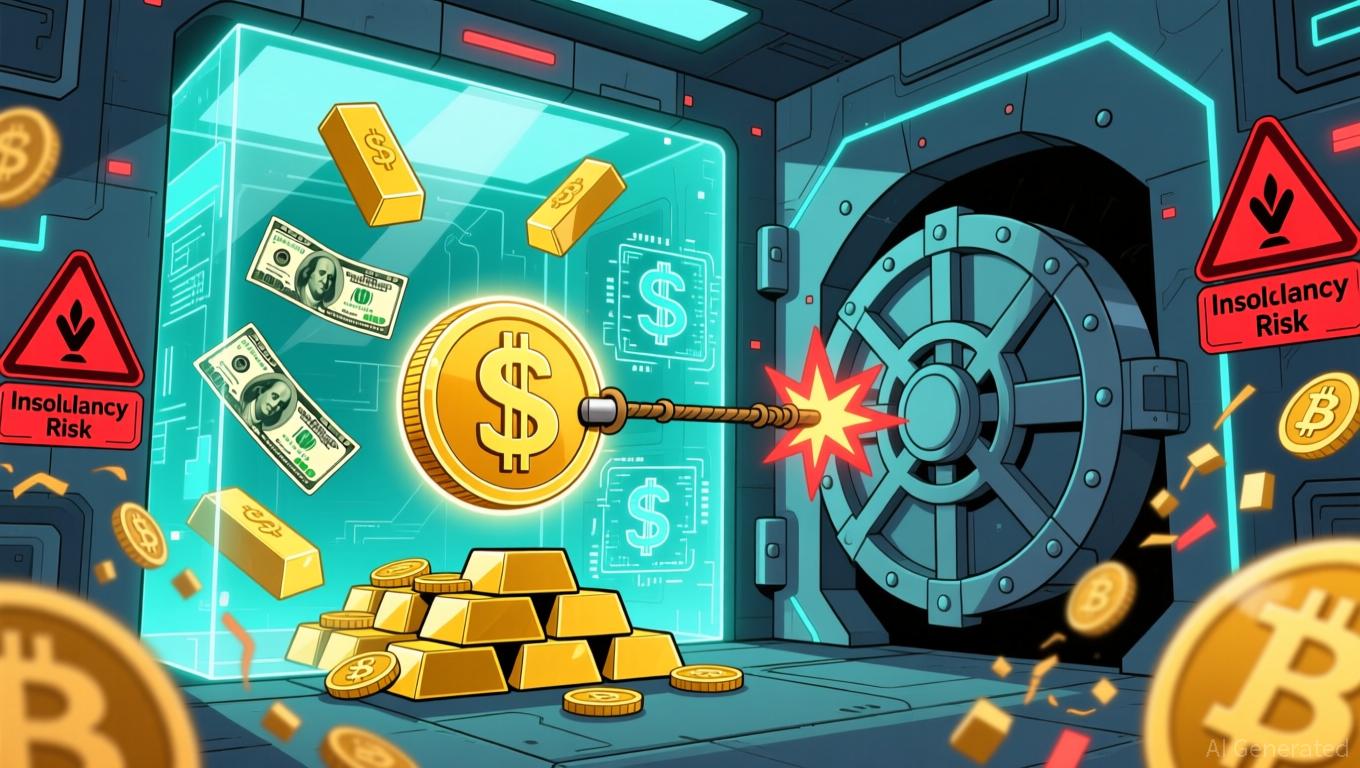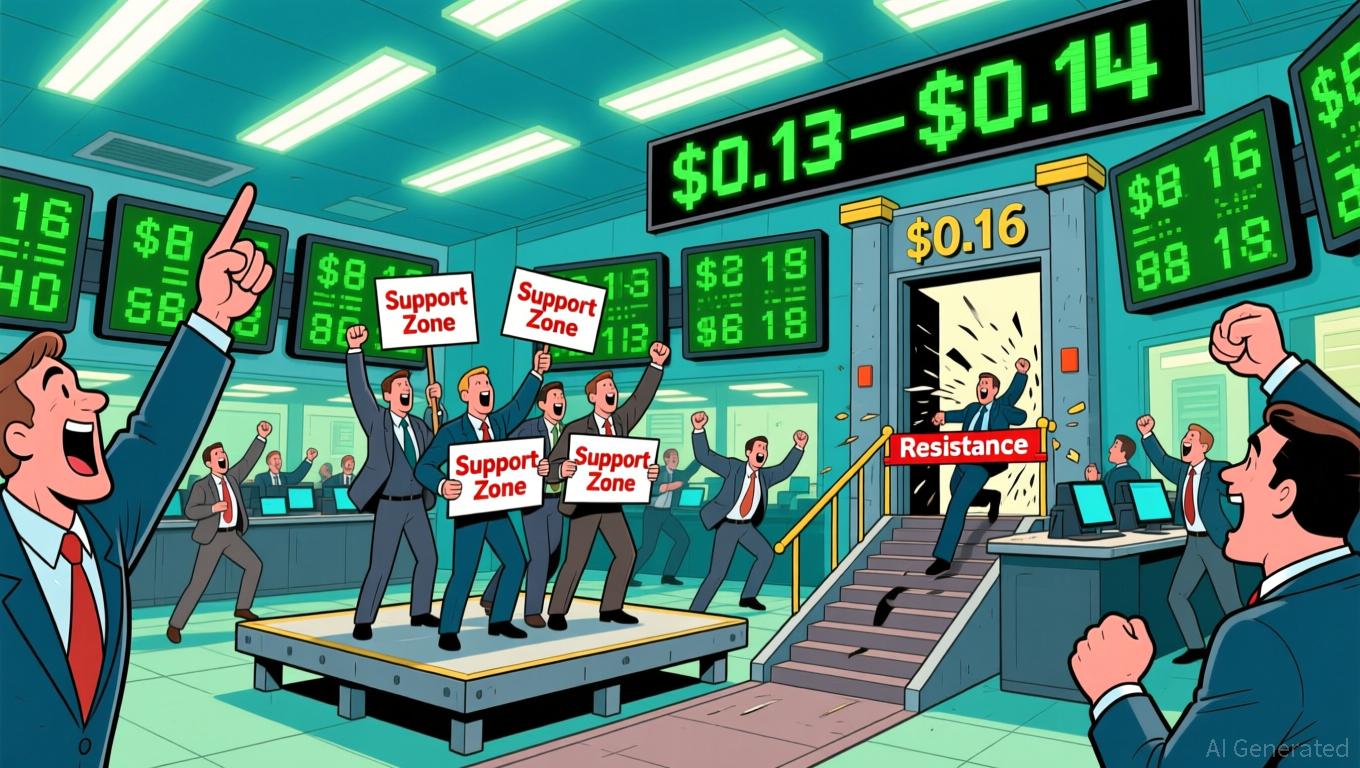China's Stablecoin Restrictions: Authorities Balance Technological Progress with Economic Security
- China's regulators halt mainland firms' stablecoin projects in Hong Kong to address financial stability risks. - Global stablecoin usage expands beyond crypto trading, but high fees persist, with USDT dominating the market. - Kyrgyzstan launches KGST stablecoin and plans a CBDC to boost international settlements and digital currency adoption. - Experts note China's regulatory actions aim to balance innovation with risk management, maintaining competitiveness against the U.S.
Chinese authorities have intensified their oversight of stablecoin projects in Hong Kong, with the People's Bank of China (PBOC) reportedly instructing mainland companies to halt their stablecoin launches in the city. This action, which targets both banks and non-bank payment providers, highlights growing apprehension over the dangers posed by unregulated digital currencies, especially as global stablecoin usage accelerates, according to
The South China Morning Post also reported that the PBOC and the Cyberspace Administration of China have told firms like Ant Group and JD.com to suspend their stablecoin initiatives. This move comes as Hong Kong has become a significant hub for digital assets since 2022, fostering a relatively open environment for the industry. Now, regulators are aiming to slow the rapid expansion of stablecoins and real-world asset (RWA) tokenization, citing worries about financial stability and the movement of capital across borders.
![]
Worldwide, stablecoins are increasingly being used for payments beyond crypto trading, though transaction costs remain a significant hurdle. Recent
Elsewhere, Kyrgyzstan has introduced its own stablecoin, KGST, which is pegged to the som at a 1:1 ratio, in partnership with Binance founder Changpeng Zhao. The country also revealed a three-stage plan to test a Central Bank Digital Currency (CBDC), beginning with internal transfers and eventually including offline payments, according to
Industry analysts believe that China's regulatory measures in Hong Kong do not indicate a withdrawal from digital assets as a whole. Despite the current pause, China continues to compete with the United States in the digital asset arena, with officials reaffirming their commitment to long-term strategic objectives, as noted by the South China Morning Post. The PBOC's actions reflect an effort to balance encouraging innovation with mitigating risks in a fast-changing sector. As stablecoins and CBDCs become more prevalent worldwide, regulators must find ways to maintain financial stability while supporting technological advancement.
Disclaimer: The content of this article solely reflects the author's opinion and does not represent the platform in any capacity. This article is not intended to serve as a reference for making investment decisions.
You may also like
Bitcoin News Update: S&P Rating Drop Highlights Tether’s Risky Asset Holdings and Lack of Transparency
- S&P downgrades Tether's USDT to "5 (weak)" due to high-risk reserves and transparency gaps. - Tether's 5.6% BTC exposure exceeds overcollateralization margins, risking undercollateralization if prices drop. - CEO dismisses critique as traditional finance bias, claiming no "toxic" assets in reserves. - Regulators intensify scrutiny as stablecoin centralization risks emerge amid $184B USDT circulation. - S&P urges Tether to reduce risky assets and enhance reserve disclosure to rebuild trust.

Dogecoin Latest Updates: Is a Repeat Performance on the Horizon? Holding $0.15 May Signal a 611% Rally for Dogecoin
- Dogecoin (DOGE) stabilized near $0.15 support, triggering historical 611% rally potential to $1 by 2026. - Grayscale's GDOG ETF and pending Bitwise BWOW ETF mark institutional adoption, though initial inflows remain muted. - Technical indicators show mixed momentum with RSI near oversold levels and key resistance at $0.16. - Market remains divided as ETF-driven liquidity and on-chain infrastructure contrast with macroeconomic and regulatory risks.

Turkmenistan’s Approach to Cryptocurrency: Centralized Oversight Amidst a Decentralized Age
- Turkmenistan legalizes crypto trading under strict 2026 regulations, granting state control over exchanges, mining , and custodial services. - Law mandates KYC/AML compliance, bans traditional banks from crypto services, and classifies digital assets into "backed" and "unbacked" categories. - Central bank gains authority to operate state-monitored distributed ledgers, contrasting with decentralized approaches in South Korea and Bhutan. - Framework aims to balance innovation with oversight, testing Turkme
Bitcoin News Update: Has $162 Billion Left Crypto Due to Institutional Buying or a Broader Market Pullback?
- BlackRock deposited 4,198 BTC and 43,237 ETH into Coinbase amid crypto sell-offs, despite $355.5M Bitcoin ETF outflows. - A 1.8M BTC ($162B) overnight exchange withdrawal sparks speculation about institutional accumulation or portfolio rebalancing. - $40B in BTC/ETH exchange inflows and record $51.1B Binance stablecoin reserves highlight institutional demand for regulated crypto products. - On-chain data shows 45% of large deposits (≥100 BTC) and 1.8M BTC withdrawals, indicating mixed market sentiment ah
